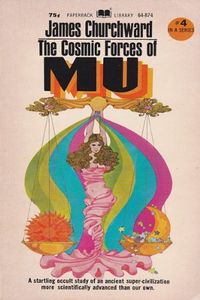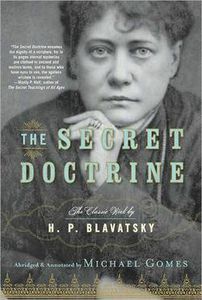Naacal Tablets
The Naacal Tablets are a fabricated set of stone tablets depicting elaborate origin stories about the creation of human civilization. Despite numerous individuals claiming the drastic implications the information from the Naacal Tablets have on human history, there has never been any physical archaeological evidence of such stones. [1] While there is much debate over whether the stone tablets exist in a secret library hidden somewhere in the world, the consequences of the stones inception have shaped entire belief-systems and religions, such as Theosophy. [2]

Last, F. M., & Last, F. M. (Year Published). Article title. Journal Name, Volume(Issue), pp. Pages.
[4]
Naacal Tablets: Historical Context:
Augustus and Alice Le Plongeon
Augustus Le Plongeon, a French photographer and amateur archaeologist, was the first to begin shaping the narrative about the Naacals.[1] In 1896, Plongeon and his wife, Alice Dixon, wrote their controversial book, Queen Moo and the Egyptian Sphinx, in which the Naacals were first mentioned. The Plongeon's claimed the Naacals were a group of "exalted" missionaries, tasked with the purpose of spreading the religion and way of life of the ancient Maya across the world. Plongeon further believed the ancient Maya traveled by way of Atlantis to Egypt to communicate to the ancient Egyptians sacred knowledge the Naacals carried with them from Mu. Augustus and Alice claimed the Naacals were an ancient people mixed with the bloodline of a Prometheus from the lost continent Mu. These ancient people had access to advanced scientific understanding and technology, far more advanced than the technologies and understandings of the early 20th century. Le Plongeon’s passion turned obsession discredited his contributions to stereophotogrammetric style photography, a 3D method used specifically for archaeological and scenery setting photography. The Plongeon’s were also responsible for several minor archaeological findings that they do not receive much credit for due to their radical and fringe beliefs. One such discovery was a five-foot statue of a man, dubbed “Prince Chaacmol,” the Plongeon’s believed this statue was proof of the existence of Queen Mu. [1] However, the Plongeon’s merely appropriated Mayan folklore to fit their own narrative, extending elaborate stories of their own to fit a template of traditionalism they were able to sell to many interested spiritualists and similar sorts.
James Churchward
James Churchward was another key proponent in popularizing the Naacal Tablets[5].. Churchward was the first to claim the lost continent Mu was at the bottom of the Pacific Ocean. In 1872 Churchward invested in a tea plantation in Sri Lanka and shortly moved back to England and commenced to traveling around the United States, writing his antediluvian works, including: The Lost Continent of Mu, The Children of Mu, The Sacred Symbols of Mu, The Cosmic Forces of Mu and The Second Book of the Cosmic Forces of Mu. As utilized by the theosophists, Churchward meshed a variety of methods to conclude his beliefs about the lost continent theory. This flaw led Churchward to take scientific techniques out of context, such as mixing scientific ideas with spiritual intuition. Churchward’s narrative claims that he discovered Mu through reading ancient texts kept in a secret library in India, the source of this text was referred to as the Naacal Tablets. According to Churchward, the tablets were written in a dead language, Naacal, which he believed was the origin language from which all other language came from. Following his narrative, an Indian priest took a liking to the Churchward and agreed to teach him the lost language of Naacal, showing him the texts. Churchward clarified that he did not fully learn the language, instead, when he read the tablets, he was able to obtain the text psychically, which for him, was proof of their divine nature. After Churchward published his findings from the tablets, other such stories popped up in which he took special interest, as they confirmed his interpretation of the reading. William Niven, a geologist researching in San Miguel Amanatla, Mexico, claimed he found tablets with very similar interpretations
Helena Petrovna Blavatsky

Helena Petrovna Blavatsky (1831-1891) was the co-founder of the Theosophical society. Born of Russian nobility, Blavatsky had an unconventional life from birth. Upon running away after a month of marriage when she was 17, she traveled around the world, making her way as a psychic medium, and learning about spirituality and the occult from her travels around the world. Along with William Quan Judge and Henry Steel Olcott, Blavatsky founded the Theosophical society in New York in 1875, which quickly spread Blavatsky's teaching around the world. Blavatsky wrote two books which became the foundation of the society, Isis Unveiled (1877) and The Secret Doctrine (1888). She claimed to have attained the information about esoteric realms and lost history by channeling and communicating with the “Mahatmas” or masters of these astral realms. Many New Age followers now call these Mahatmas, Ascended Masters, eluding to their nature of enlightenment. Similarly to Churchward, Blavatsky claimed to have traveled to Tibet with the help of the Occult Brotherhood, a secret society product of the Theosophical movement, and was shown ancient texts from a high priest. Through her so called special ability to channel these ascended masters, she transcribed the messages from the ancient tablets. Blavatsky's mediumship was described as being heavily symbolic as only her close followers in elite circles of the Theosophists claimed to have understood the complex symbolism. Many of these followers were given jobs of transcribing her channeling sessions, which further contributed to the spreading of her teachings as well as what is said in the elusive Naacal Tablets.
Societal Implications and Deconstruction
Pseudoarchaeological Narrative
Excavation of Absurdity
In Yucatan, Mexico, 1874, Le Plongeon and his wife, Alice, uncovered the five-foot tall reclining man they endearingly refereed to as "Prince Chaacmol."
Cite error: Invalid <ref> tag; invalid names, e.g. too many
- ↑ 1.0 1.1 1.2 McDaniel, S.(2007).The Lure of Moo. Archaeology,60(1),48-51. Retrieved from https://archive.archaeology.org/0701/abstracts/plongeon.html.
- ↑ Faxneld, P. “Blavatsky the satanist: luciferianism in theosophy, and its feminist implications. Tenenos, 48(2)203-30.
- ↑ . Churchward.(1972).James Churchward Book Cover Photo [Photograph] Retrieved from http://www.amazon.com/Cosmic-Forces-Mu-James-Churchward/dp/0446648744
- ↑ Cite error: Invalid
<ref>tag; no text was provided for refs namedWatrall - ↑ Lanset, Andy. “WNYC and the Land of Mu.” NYPR Archives and Preservation. http://www.wnyc.org/story/179746-wnyc-and-land-mu/. Accessed 3 Nov. 2017.